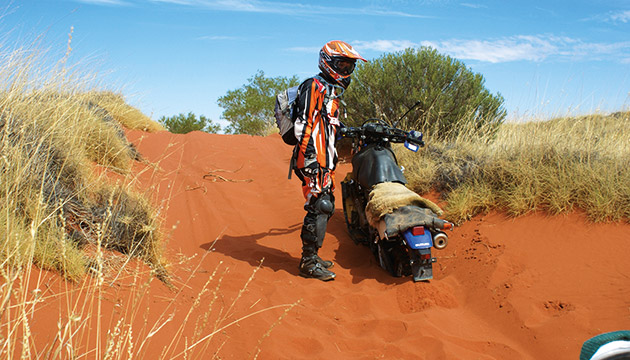A group of South Australian farmers has tackled the challenging Canning Stock Route on motorbikes.
Story By Fleur Bainger
It all happens in a split second. Your balance gives way, the world tips sideways and all you can see are layers of scrub coming at you faster than your brain’s ability to process what’s happening. With your speed slowing from 60km/h to a standstill over a handful of metres, the only thing left to do is pick the remnants of plants from your clothes, dust yourself off and let out a loud ‘woo hoo’, then marvel at the never-ending red sunbaked plains stretching out around you.
Tackling one of the world’s most isolated and challenging outback tracks on the back of a motorbike might seem like pure lunacy to some. Others might question the logic of battling deep, sandy terrain covered in prickly wattle that tears at exposed skin and scrapes off paintwork. But for 11 farmers from the south-east of South Australia and two Austrians, their three motorbikes and four four-wheel-drives, a journey along the remote Canning Stock Route presented an exhilarating escape from the norm and a chance to have a hell of a lot of fun.
Setting out to cover more than 9000 kilometres in 37 days, the adventurers watched their homes on the relatively lush Limestone Coast fade in rear-view mirrors as they travelled in convoy north to Alice Springs. Following the Tanami Desert track to the top of Western Australia, the group turned southward at Wolfe Creek Crater to trace surveyor Alfred Canning’s century-old footsteps, the goal of their expedition. A reluctant return via the Nullarbor was a long way off yet with 900 sand dunes between them and Wiluna, WA, at the route’s end. From go to whoa they would spend only 2500 kilometres of the entire journey on bitumen, with a fair bit of the remaining distance allocated to pulling themselves out of bushes and patching up tyres.
This Story is from Issue #61
Outback Magazine: Oct/Nov 2008









